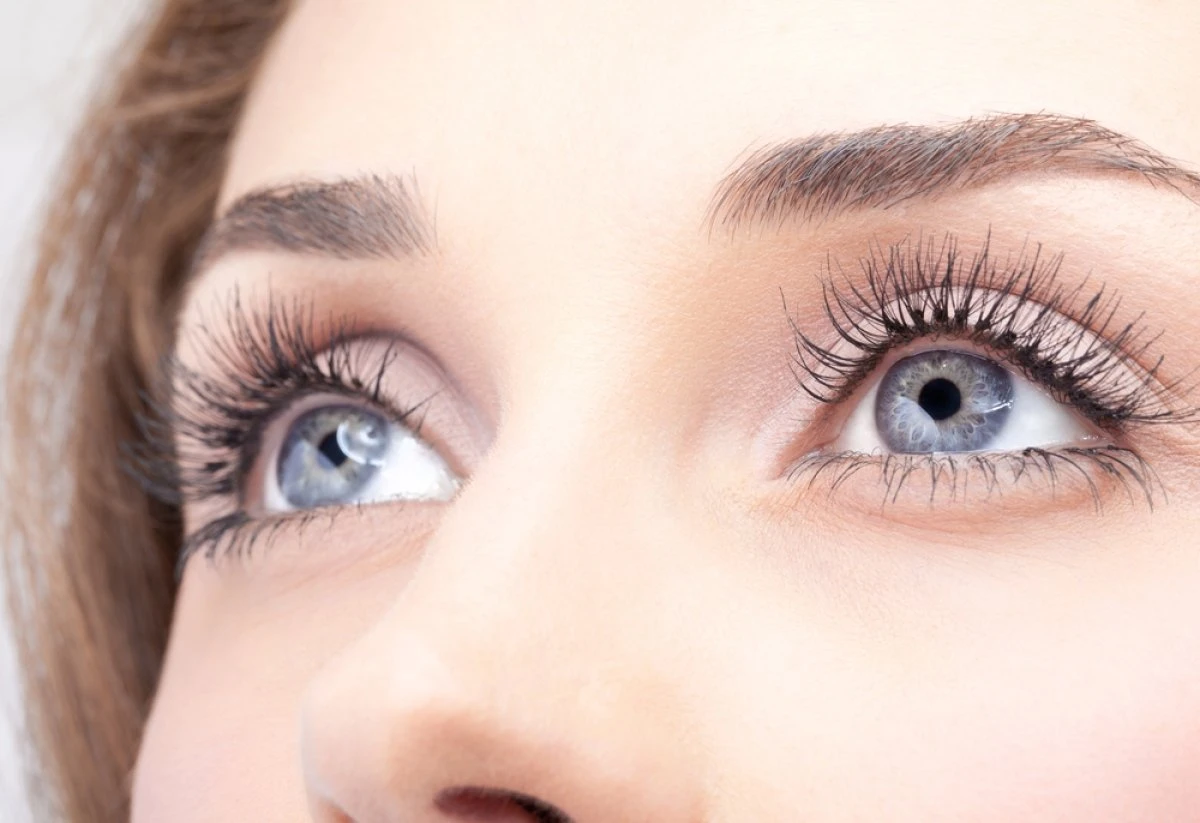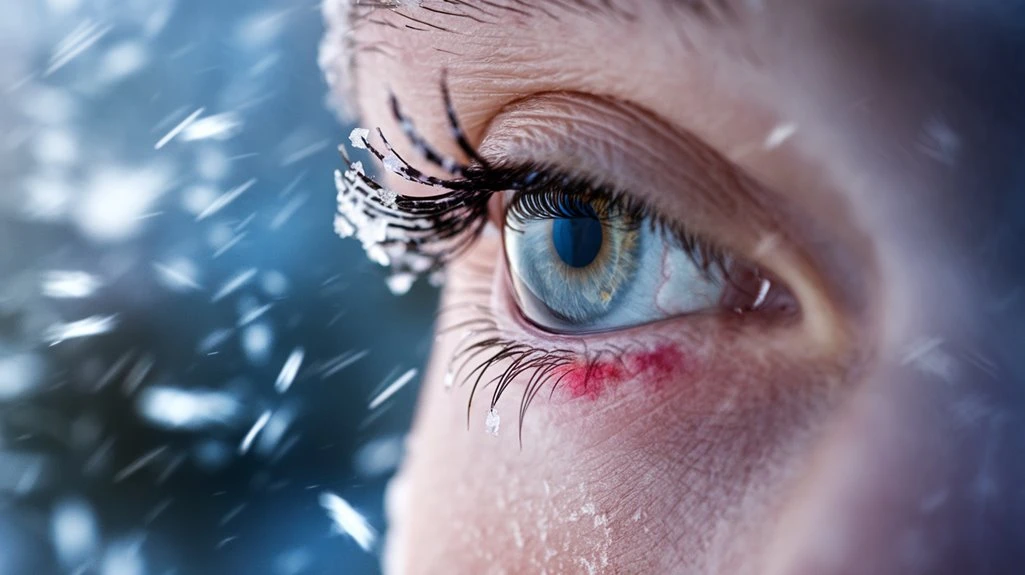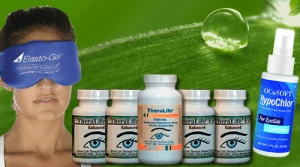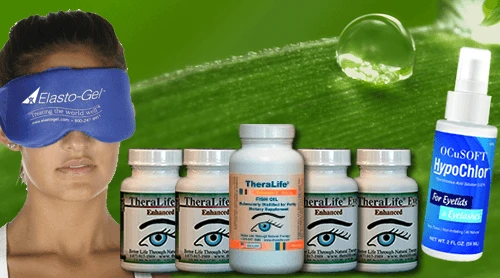During the winter months, blepharitis can become more problematic due to factors like reduced humidity, indoor heating, and harsh winds that dry the ocular surface. TheraLife offers products specifically designed to alleviate these issues by enhancing the stability of the tear film and providing relief from dry eyes and blepharitis symptoms.
TheraLife’s Eye Enhanced formula offers comprehensive eye care by improving tear production, reducing inflammation, and addressing the root causes of dry eyes. Additionally, TheraLife provides targeted treatments for conditions like blepharitis and uveitis, utilizing natural ingredients to soothe symptoms and promote eye health.
For those dealing with makeup-related eye irritation or eyelash mites, TheraLife offers guidance and solutions to mitigate these problems while maintaining eye hygiene. The inclusion of omega-3 supplements in their products helps reduce inflammation and supports overall eye wellness.
TheraLife’s focus on improving indoor humidity and incorporating anti-inflammatory diets further enhances the effectiveness of their treatments, ensuring customers receive holistic care. When symptoms persist, TheraLife encourages professional consultation to tailor treatments to individual needs, promoting long-term eye health and comfort during the winter season.
Best Blepharitis/MGD Treatment From TheraLife- When Drops Don’t Work.
Key Takeaways
- Cold weather decreases humidity, increasing dry eye symptoms and risk of blepharitis flare-ups.
- Use lubricating eye drops to maintain tear film integrity during colder months.
- Regular eyelid hygiene with mild cleansers helps prevent debris accumulation and inflammation.
- Omega-3 supplements reduce inflammation and support ocular surface health.
- Protective eyewear shields eyes from cold winds and maintains ocular moisture.
Understanding Blepharitis: Causes and Symptoms
Blepharitis, a common ocular condition, involves inflammation of the eyelid margins. It’s typically classified into two primary blepharitis types: anterior and posterior. Anterior blepharitis affects the outer eyelid where eyelashes attach, often linked to bacteria or dandruff. Posterior blepharitis impacts the inner eyelid, where oil glands become dysfunctional, frequently associated with skin conditions like rosacea. Understanding these types helps you identify specific symptoms such as eyelid crusting, redness, and irritation. Tear film osmolarity serves as a diagnostic biomarker for determining the severity of related dry eye conditions. Effective management begins with rigorous eyelid hygiene. Regular cleansing routines with warm compresses and lid scrubs can greatly reduce bacterial load and gland blockages. Consistent eyelid hygiene not only alleviates symptoms but also prevents recurrent flare-ups, maintaining ocular health. Stay proactive in managing blepharitis effectively.
The Impact of Cold Weather on Eye Health
Cold weather greatly affects ocular health by exacerbating dryness due to reduced humidity and increased indoor heating. You may notice your eyes become more susceptible to irritation, as cold air and wind can strip away the protective tear film. Research highlights that these conditions can elevate the risk of developing or worsening blepharitis symptoms, emphasizing the need for preventive measures. Additionally, dry eyes associated with rheumatoid arthritis may worsen in cold weather, necessitating specific treatments to manage discomfort.
Cold Weather Dryness
As temperatures plummet, the harsh winter conditions can greatly impact eye health, particularly due to increased dryness. Cold air holds less moisture, leading to decreased humidity levels that exacerbate ocular surface dryness. This environmental change can trigger or worsen blepharitis symptoms. To mitigate these effects, prioritize eye moisturizing by using lubricating eye drops. These artificial tears help maintain the tear film’s integrity, preventing dryness-related discomfort. Equally important is maintaining eyelid hygiene. Practicing regular eyelid hygiene reduces debris accumulation and inflammation risk, fostering a healthier ocular environment. Research underscores the importance of these practices in managing eye health during winter. Dry eye is the most common eye ailment globally and affects people of all age groups, making it crucial to incorporate these preventative measures to greatly alleviate the adverse effects of cold weather on your eyes, enhancing overall ocular well-being.
Increased Irritation Risk
When winter sets in, you might notice an uptick in eye irritation due to the harsh environmental conditions. Cold air typically lacks humidity, exacerbating the evaporation of tear film and increasing irritation risk. These irritation causes are often linked to increased tear film instability, leading to symptoms such as burning, itching, and redness. Additionally, cold winds can further aggravate ocular surfaces, prompting more frequent blepharitis flare-ups. The prevalence of MGD is estimated at 38.9% in the population, and it can contribute to the worsening of eye symptoms during winter. To mitigate these effects, consider adopting protective measures. Utilize humidifiers to maintain indoor moisture levels, reducing tear evaporation. Protective eyewear like wraparound glasses can shield your eyes from direct exposure to cold winds. Regular application of artificial tears can also stabilize the tear film. These interventions are essential in maintaining ocular health during the winter months.
How Dry Indoor Air Contributes to Blepharitis
Though often overlooked, the role of dry indoor air in exacerbating blepharitis is significant. During winter, heating systems reduce ambient humidity, impairing moisture retention on the ocular surface. This dryness leads to an unstable tear film, increasing ocular surface inflammation, a key factor in blepharitis. Eyelid hygiene is crucial for managing blepharitis symptoms, supported by Mayo Clinic recommendations. Ensuring ideal indoor humidity levels is vital for maintaining ocular health. Using air purification systems can help by removing airborne irritants that may contribute to ocular discomfort and inflammation. It’s essential to monitor humidity levels, ideally keeping them between 30-50%, to mitigate symptoms. Consider using a humidifier to enhance moisture retention, thereby supporting tear film stability.
The Role of Harsh Winds and Low Humidity
Exposure to harsh winds and low humidity during winter greatly impacts blepharitis, exacerbating symptoms and increasing discomfort. Wind protection becomes essential as cold gusts can strip moisture from the ocular surface, destabilizing the lipid layer of the tear film. This instability promotes evaporation, elevating dryness and inflammation. Low humidity levels compound the issue by reducing ambient moisture, further depleting the tear film and intensifying blepharitis-related irritation. To mitigate these effects, consider using protective eyewear that shields against wind exposure. Additionally, maintaining ideal indoor humidity levels can help preserve tear film integrity. Studies emphasize the importance of humidifiers in replenishing environmental moisture, and consequently alleviating ocular surface stress. By prioritizing these strategies, you can effectively manage blepharitis during harsh winter conditions. A comprehensive care approach, which may include tailored treatments based on individual symptom severity, can greatly assist in managing blepharitis by focusing on improving tear quality and reducing inflammation.
Identifying the Signs of a Blepharitis Flare-Up
You need to be vigilant in identifying the common symptoms of a blepharitis flare-up, which include eyelid redness, swelling, and crusting at the lash line. Recognizing triggers such as environmental irritants and stressors can help you manage and prevent exacerbations effectively. Research indicates that timely intervention can reduce the severity and duration of flare-ups, enhancing overall ocular health.
Common Blepharitis Symptoms
When identifying a blepharitis flare-up, it’s crucial to recognize the common symptoms that signal the onset of this condition. You might notice eyelid inflammation, characterized by redness and swelling around the eyelid margins. This inflammation often leads to discomfort and irritation. Another frequent symptom is crusty eyelids, particularly upon waking. The crusts result from the accumulation of discharge and debris at the eyelid base. You may also experience persistent itchiness, a gritty sensation, or burning in your eyes. In some cases, blepharitis can cause excessive tearing or dry eyes due to tear film instability. Additionally, you might observe flaking of the skin around the eyes or eyelash misalignment. Identifying these symptoms early can help manage and control flare-ups effectively. Regular use of certain Theralife products has been shown to lower the risk of recurrent blepharitis by promoting meibomian gland function and tear film stability.
Recognizing Flare-Up Triggers
Understanding the triggers that lead to blepharitis flare-ups is essential for effective prevention and management of this condition.
Environmental factors like cold, dry air can exacerbate symptoms, causing inflammation of the eyelids. However, internal factors play a significant role too. Poor stress management can lead to immune system dysregulation, thereby making you more susceptible to flare-ups.
Incorporating stress-reducing techniques like mindfulness or yoga can help. Dietary adjustments are also vital; diets high in omega-3 fatty acids have been shown to reduce inflammation, potentially decreasing flare-up frequency.
Monitor your consumption of processed foods and consider supplements if necessary. By recognizing these triggers, you can take proactive steps to manage your blepharitis more effectively during harsh winter months. Regular eyelid cleanliness and care can significantly reduce flare-ups by preventing clogged oil glands and bacterial infections.
Effective Home Remedies for Blepharitis Relief
Although blepharitis is a common ocular condition, effective home remedies can greatly alleviate its symptoms when implemented correctly.
Natural treatments, such as soothing compresses, play an essential role in managing this condition. To create a warm compress, soak a clean cloth in warm water and apply it to your closed eyelids for 5-10 minutes. This method loosens crusts and debris, promoting glandular secretion.
Additionally, dilute baby shampoo can be used as a gentle eyelid scrub to reduce inflammation and cleanse the eyelid margins. Omega-3 supplements, rich in essential fatty acids, may also support ocular surface health by reducing meibomian gland dysfunction.
Using hypoallergenic and ophthalmologist-tested eye makeup products is recommended for individuals with sensitive eyes, as it reduces the risk of irritation and helps maintain eye health.
Implementing these remedies consistently can markedly improve comfort and lower the frequency of blepharitis flare-ups.
Best Blepharitis/MGD Treatment From TheraLife- When Drops Don’t Work.
Daily Habits to Protect Your Eyes in Winter
As winter approaches, adopting specific daily habits can effectively protect your eyes from seasonal challenges.
Prioritize eye hygiene by cleansing your eyelids gently with a mild, non-irritating solution. This process helps remove debris and bacteria that may exacerbate blepharitis. Incorporate warm compresses into your routine to enhance lipid production in the meibomian glands, guaranteeing ideal tear film stability.
To further safeguard your eyes, consider wearing protective eyewear. Glasses or goggles can shield your eyes from harsh winds and cold air, minimizing irritation.
Additionally, maintain indoor humidity levels to prevent dry eyes, which can trigger blepharitis symptoms. Finally, confirm proper hydration by consuming adequate fluids, supporting systemic hydration and ocular surface health during the dry winter months.
When to Seek Professional Help for Blepharitis
Maneuvering when to seek professional help for blepharitis can greatly impact your eye health. If you experience persistent eyelid inflammation despite adhering to proper hygiene practices, it’s vital to consult an ophthalmologist.
Red flags include severe eye redness, swelling, or pain, which may indicate complications like conjunctivitis or a secondary infection. A professional evaluation is necessary for differentiating between blepharitis and other ocular conditions such as dry eye syndrome or allergic reactions.
Your eye care provider may recommend targeted treatments like antibiotic ointments or steroid eye drops to reduce inflammation. Don’t delay seeking expert advice if over-the-counter solutions fail to provide relief.
Timing your consultation effectively guarantees precise diagnosis and tailored management, ultimately safeguarding your vision and ocular comfort.
Long-Term Eye Care Strategies for Winter Wellness
When winter arrives, it’s crucial to implement long-term eye care strategies that address seasonal challenges. To maintain long-term vision health, integrate daily practices that counteract winter’s drying effects.
Increase indoor humidity with humidifiers to prevent ocular surface dehydration, a condition that exacerbates blepharitis. Consider omega-3 fatty acid supplements, as research shows they benefit meibomian gland function and reduce inflammation.
Implementing seasonal adjustments like wearing wraparound sunglasses can shield your eyes from cold winds and UV exposure, both risk factors for eye irritation. Hydrate adequately to support tear production, and follow a nutrition plan rich in antioxidants.
Regularly schedule eye examinations to monitor eye health and adjust care strategies as needed. These proactive measures can promote ocular wellness throughout the winter months.
Best Blepharitis/MGD Treatment From TheraLife- When Drops Don’t Work.
Frequently Asked Questions
Can Wearing Contact Lenses Worsen Blepharitis During Winter?
Yes, wearing contact lenses can exacerbate blepharitis in winter due to dry conditions and potential hygiene lapses.
Guarantee ideal contact lens hygiene by cleaning lenses daily and using preservative-free solutions.
Winter eye protection, such as humidifiers, can mitigate dryness, reducing the risk of inflammation.
Research suggests maintaining eyelid hygiene with warm compresses and lid scrubs can prevent flare-ups.
Prioritize clinical guidelines to manage symptoms effectively during colder months.
Are There Specific Foods That Can Help Prevent Blepharitis?
Incorporating anti-inflammatory foods into your diet is like giving your eyes a bell-bottom boost. Omega-3 sources, such as flaxseeds, walnuts, and oily fish like salmon, have shown to reduce blepharitis symptoms.
Research indicates these nutrients help modulate inflammatory pathways, potentially minimizing flare-ups. You should also consider foods rich in antioxidants, like leafy greens and berries, as these can support ocular health by fighting oxidative stress.
Keep your diet eye-friendly!
Do Certain Medications Increase the Risk of Winter Blepharitis?
You’re probably wondering if certain medications can increase the risk of winter blepharitis.
Yes, medication types such as isotretinoin and certain antidepressants can act as risk factors. They may induce ocular surface dryness, exacerbating blepharitis symptoms during cold weather.
Research indicates these medications reduce tear production, affecting the meibomian glands.
Consult your healthcare provider to assess your medication regimen, ensuring it aligns with your eye health needs during winter months.
How Does Stress Influence the Severity of Blepharitis in Cold Weather?
Investigate whether stress truly exacerbates blepharitis in cold weather.
Research suggests stress can trigger inflammatory responses, potentially worsening blepharitis symptoms. It compromises the immune system, making you more vulnerable to flare-ups. Effective stress management, such as mindfulness or therapy, could mitigate these effects.
Cold weather often aggravates symptoms, as it dries out the skin and eyes, increasing irritation.
Addressing both stress and environmental factors might alleviate your blepharitis severity.
Can Eye Exercises Reduce the Risk of Blepharitis Flare-Ups?
You can’t solely rely on eye exercises to reduce blepharitis flare-ups.
While exercises might improve general eye health, maintaining good eye hygiene and using warm compresses are more effective.
Research indicates that warm compresses help unclog meibomian glands, reducing inflammation.
Proper eye hygiene, including regular cleansing of eyelids, prevents bacterial build-up.
Adopting these practices, along with exercises, offers a thorough approach to managing and preventing blepharitis flare-ups.
Best Blepharitis/MGD Treatment From TheraLife- When Drops Don’t Work.
Conclusion
When winter arrives, are you prepared to safeguard your eyes from blepharitis flare-ups? At TheraLife, we understand the challenges cold weather brings, such as dry indoor air and harsh winds. Our products are designed to help you manage symptoms effectively through natural solutions and daily habits that promote eye health. By recognizing early signs and utilizing our comprehensive range of treatments, you can ensure your eyes remain comfortable and healthy throughout the season. Remember, eye care isn’t just seasonal—it’s a lifelong commitment. Stay informed and proactive with TheraLife to maintain optimal eye health year-round.





